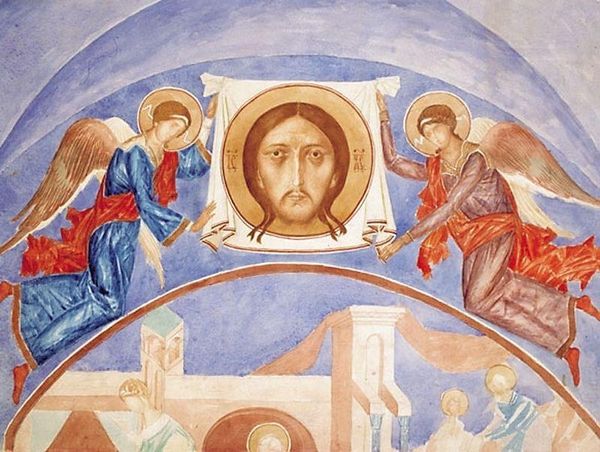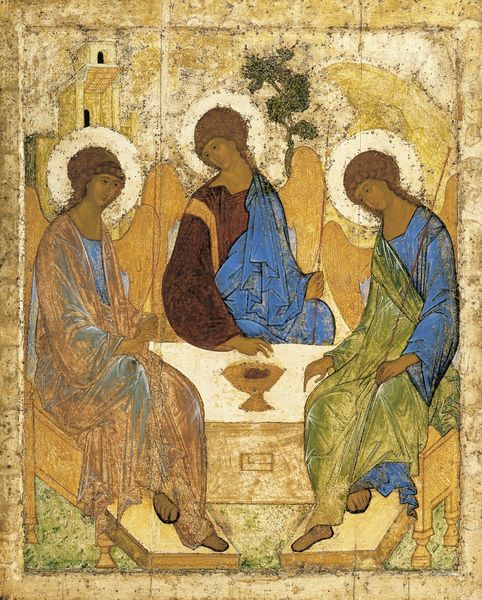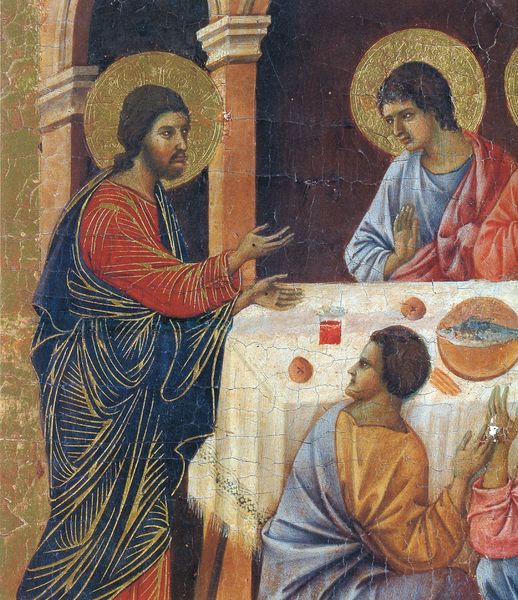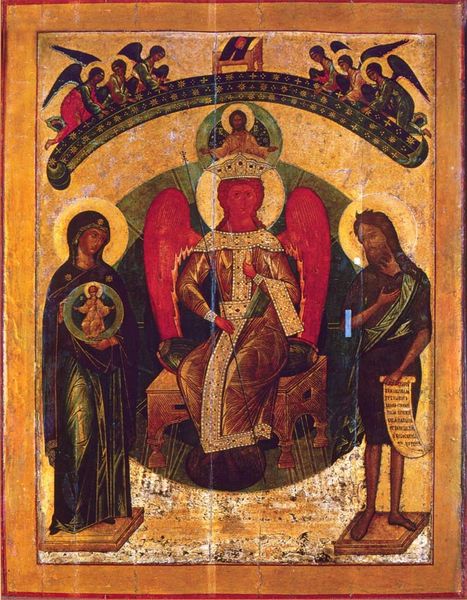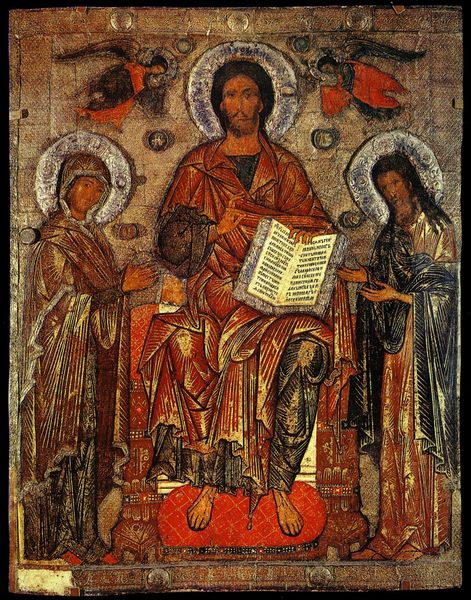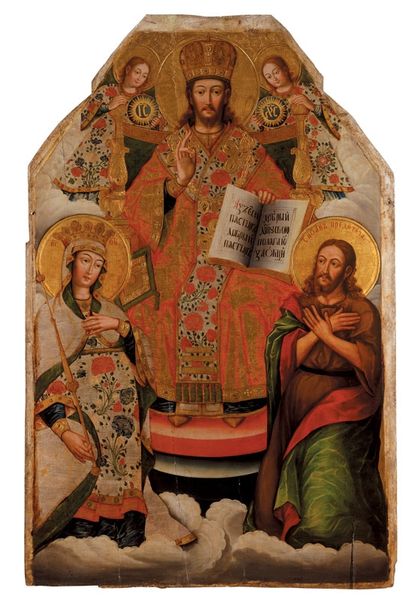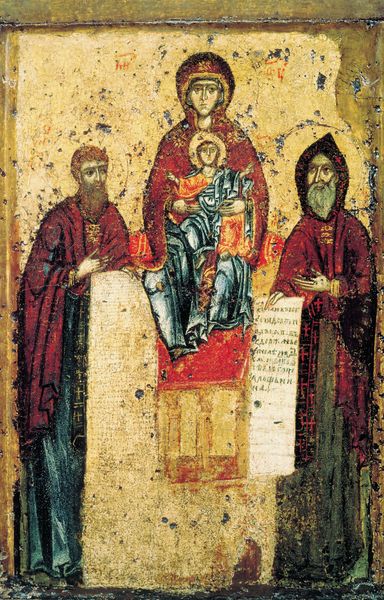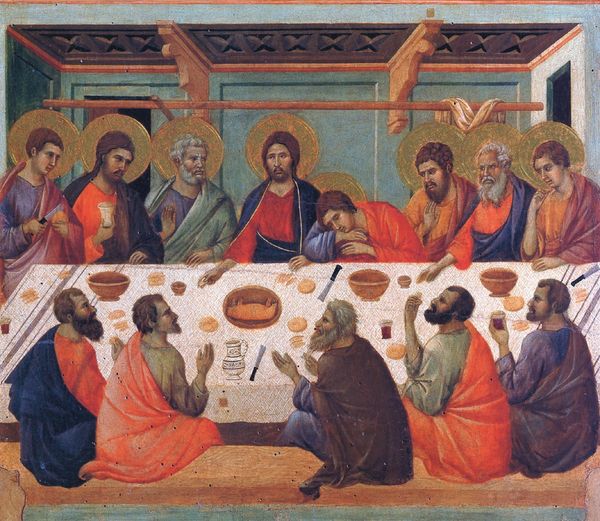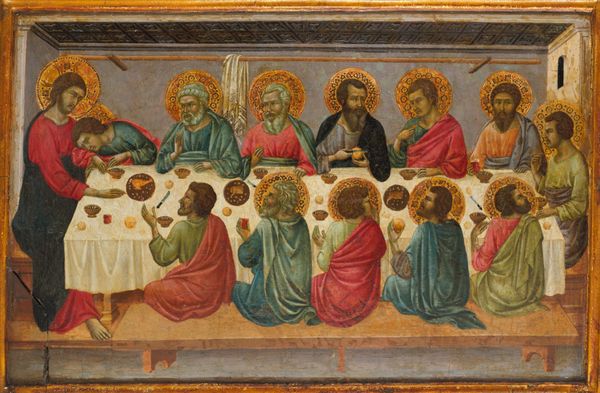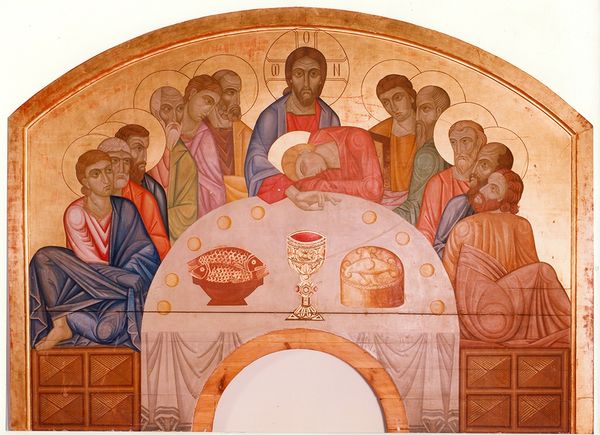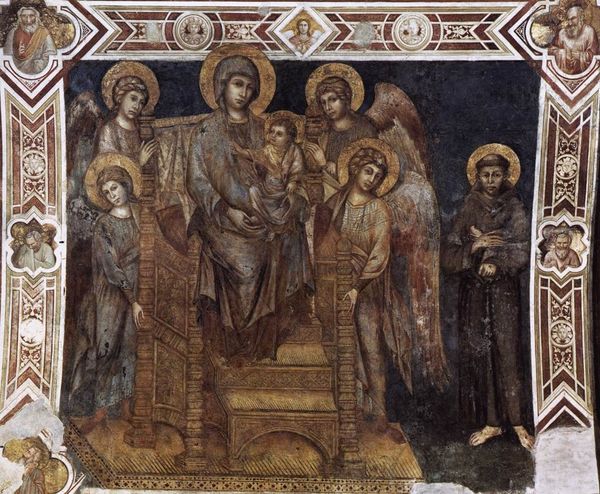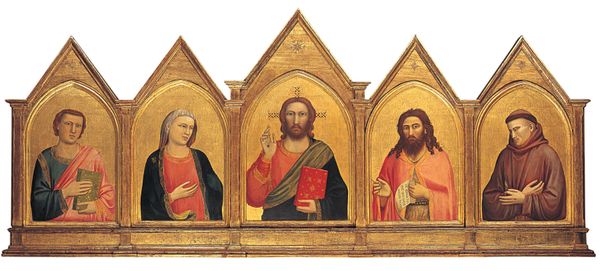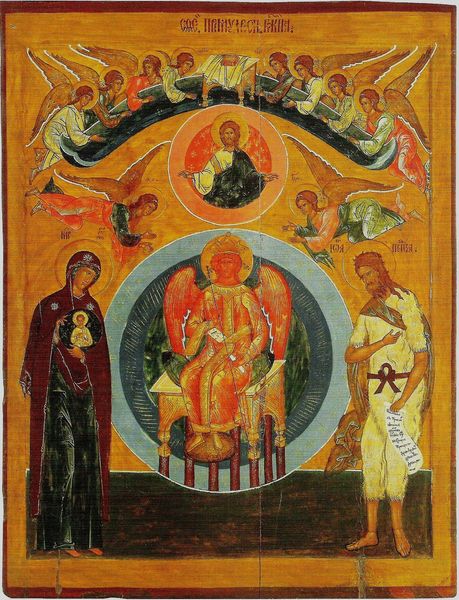
The King's Gate with the gate canopy. The Last Supper. 1907
0:00
0:00
nicholasroerich
Perm State Art Gallery, Perm, Russia
tempera, painting
#
portrait
#
byzantine-art
#
narrative-art
#
tempera
#
painting
#
figuration
#
oil painting
#
group-portraits
#
christianity
Dimensions: 21 x 57 cm
Copyright: Public domain
Curator: This is Nicholas Roerich’s 1907 tempera painting, “The King's Gate with the Gate Canopy. The Last Supper.” It’s currently held in the Perm State Art Gallery in Russia. Editor: Immediately striking! The composition, divided into compartments like a triptych, combined with the flatness and stylization evokes such Byzantine art! Curator: Exactly. Roerich deeply admired early Byzantine iconography. Notice the patterned gold leaf, the stylized figures clustered around Christ at the table – all pulling from those ancient visual traditions. Editor: It's interesting how Roerich fuses that Byzantine austerity with a slightly more emotive style in the faces. Especially in the depiction of the apostles. It’s as if he’s trying to bridge the gap between symbolic representation and genuine human feeling. Curator: Precisely, you’re seeing the influence of the early 20th century’s search for spiritual and national identity through art. Roerich was interested in synthesising artistic languages, invoking collective spiritual memory and feeling. The Last Supper itself, is rich in symbolism, it’s about sacrifice, betrayal, redemption. It has enduring psychological weight. Editor: And how he positions it as a “gate!” Visually the composition has Christ centered and as a “gate,” creating this passageway towards… what exactly? Salvation? A higher spiritual understanding? Roerich seems to invite us into that narrative space, suggesting that this historical event remains intensely relevant. Curator: That doorway can mean a variety of things, but for Roerich and many of his contemporaries, these older forms provide that feeling of authenticity that allows for people to access faith as an internal practice. Editor: This piece, made during a time of intense societal transformation, serves not merely as a historical record but as a potent emblem of a culture grappling with modernization whilst seeking solace in its spiritual lineage. Its Byzantine influence seems not so much an affectation as it is a grounding element. Curator: It reminds us that art acts as a conduit, through the use of symbolic visual languages art creates echoes of spiritual, and personal relevance across generations. Editor: Indeed. Thank you, what an insight.
Comments
No comments
Be the first to comment and join the conversation on the ultimate creative platform.

